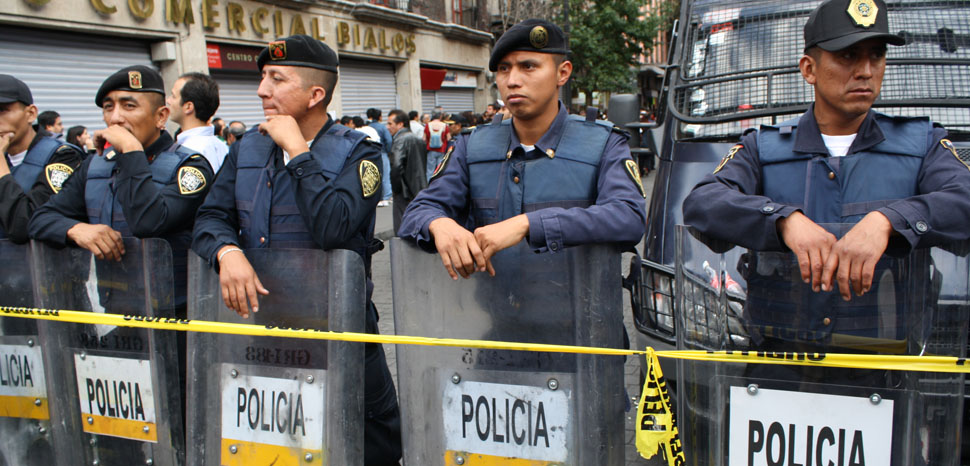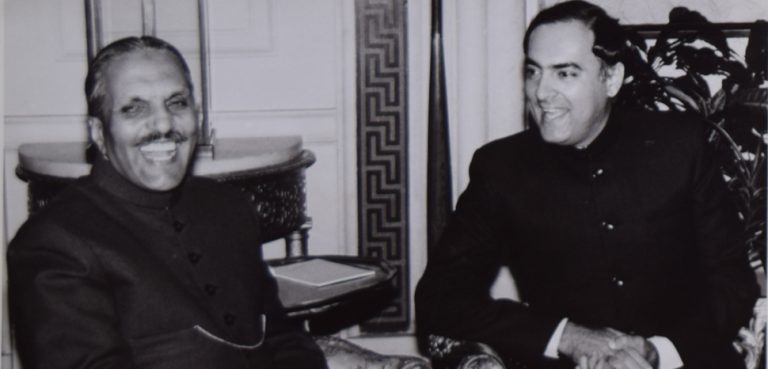At dawn on June 26, a leafy neighborhood of Mexico City awoke to the sounds of automatic gunfire and fragmentation grenades from a coordinated assault on the city’s chief of police. On the streets of Lomas de Chapultepec, home to ambassadors and business leaders, 28 assailants ambushed Mexico City’s most senior law enforcement officer, Omar García Harfuch, during his morning commute and hammered his armored car with military grade weaponry. The assault left three dead but García Harfuch, shot three times and wounded by shrapnel, survived.
While the Mexican government has yet to formally attribute the attack to any group, preliminary reports strongly suggest the powerful New Generation Jalisco Cartel (CJNG) was responsible. In a Twitter posting from the hospital, García Harfuch blamed the CJNG for the attempt on his life. Local press reports, citing government security sources, indicate that Mexico’s intelligence services had anticipated an attack since at least June 11, when intercepts of discussions between assassins affiliated with the CJNG revealed a pending plot against an unspecified senior official. Mexico’s Security Cabinet subsequently assessed the Mexico City police chief to be one of four possible targets. After the attack, a CJNG member allegedly responsible for contracting assassins for the cartel was among 19 individuals arrested.
As clearer indications of responsibility for the attack filter into the public realm, security analysts and the media have begun to raise inevitable questions of motive and meaning. Why Mexico City’s chief of police? What did the CJNG hope to gain? And how will the government respond? Preliminary accounts provide partial answers. They suggest overlapping criminal, personal, and political motives for the attempted assassination and that the CJNG, despite recent setbacks, is both willing and able to engage in direct confrontation with the Mexican state.
On a purely tactical level, the June 26 attack was an attempt by the CJNG to reduce operational risk. After becoming Mexico City’s Secretary of Citizen Security in October 2019, García Harfuch depleted the ranks of local CJNG-affiliated groups. He also arrested at least three local CJNG cell leaders, one of whom Mexican authorities describe as a trusted operative of cartel leader Nemesio Oseguera Cervantes, known as El Mencho. The arrests put pressure on the CJNG’s retail drug sales and extortion rackets in a key metropolitan center at a time when international COVID-19 measures have constrained its wholesale trade in heroin and synthetic drugs and the Mexican government has attacked its finances. Indeed, there is speculation that García Harfuch’s unwillingness to negotiate with the crime syndicates he targeted may have precipitated the attack against him.
Yet, there is also a personal element to the assault. The damage that García Harfuch has inflicted on the CJNG over the years appears to have inspired personal animosity and made him a uniquely attractive target. According to press accounts of his career, while serving with the Federal Police García Harfuch coordinated operations that came close to capturing El Mencho in the mountains of Jalisco and the port city of Puerto Vallarta. He also directed investigations that led to the 2015 arrest of El Mencho’s son, who was extradited to the United States in February this year. In addition, García Harfuch is credited with having thwarted a planned CJNG alliance with the Sinaloa Cartel in 2017, which disintegrated after one of his operations led to the capture of the Sinaloa leader who was negotiating the agreement.
The choice of a wealthy and supposedly secure Mexico City enclave as an attack venue suggests a potential political motivation by the CJNG. Mexico’s cartels have long used extreme violence for public messaging. A famous practice, known as calentar la plaza, uses high-profile violence to trigger a law enforcement crackdown in a targeted area, which impedes the operations of rivals and intimidates or angers the local public. The use of this tactic in the heart of the capital could be read as an effort to undermine the political standing of Mexican President Andrés Manuel López Obrador, known as AMLO, and his ally, Mexico City Mayor Claudia Sheinbaum.
It is conceivable that the CJNG perceives AMLO as having taken sides – however inadvertently – in its ongoing rivalry with the Sinaloa Cartel. In February 2019, AMLO authorized a humanitarian visa for the mother of former Sinaloa Cartel leader Joaquín “El Chapo” Guzmán, enabling her to visit her son as he stood trial in New York. This March, AMLO travelled to El Chapo’s village of La Tuna in the mountains of Sinaloa – a highly unusual trip for a sitting president – and was caught on camera greeting El Chapo’s mother. Then, on June 19 he publicly admitted to having personally ordered the release of El Chapo’s son, Ovidio Guzmán, when the latter was briefly captured during a federal firefight with cartel forces in Sinaloa last October.
In that context, the CJNG may have intended its attack, highly visible and perpetrated near the seat of national government, to weaken AMLO’s public support by exacerbating feelings of insecurity. Indeed, nearly three-quarters of Mexicans already consider their city to be unsafe, and 57% disapprove of AMLO’s handling of public security. The attack also appears to be the second time in the past year that the CJNG has conducted a high-profile killing in the city governed by AMLO’s close political ally, Claudia Sheinbaum. Sheinbaum, a member of AMLO’s political party, has struggled to regain her balance on security issues since a CJNG-linked shooting of two Israelis in a luxury shopping center in Mexico City last July.
Finally, the attack delivers an unmistakable message of confidence by the cartel and reveals a willingness to directly confront Mexican forces. The plot was logistically complex, involving multiple operational cells, military grade weapons, and extensive surveillance. It took aim at a hard target more than 300 miles from the CJNG’s stronghold in Jalisco and did so near the headquarters of the Mexican Army, Navy, and National Guard. Its boldness and sophistication discredited any notions that the CJNG was reeling from its recent setbacks. It also implies that, if more discreet arrangements can’t be made with law enforcement and legislators, the CJNG does not fear incurring the full wrath of the state.
Now, the Mexican government must calibrate its response: too soft will invite more impunity, too hard will invoke references to a militarized “war on drugs” that AMLO has so assiduously avoided. The initial response appears circumspect. In a June 27 social media posting, AMLO declared that Mexico’s security strategy would remain unchanged in response to the attempted assassination and that he would neither declare war nor negotiate with organized crime. The statement emphasized two pillars of his strategy – educational and economic assistance to the young and a preference for preventive intelligence over military force – and did not mention any cartels by name.
For the Mexican government to credibly deter future threats to public order and attacks on its officials, that strategy needs to evolve. A renewed focus on judicial reform, enhanced U.S. security cooperation, and greater sharing of criminal intelligence with foreign partners should be urgent priorities.
As many suspects in the García Harfuch attack have already been apprehended, now is the time to revisit the judicial reforms that AMLO’s government tabled but quickly withdrew in January 2020. The reforms, which proposed changes to Mexico’s Constitution and four federal laws, tried to address concerns that the country’s adoption of a US-style accusatorial justice system in 2016 made it harder for under-staffed police and prosecutors to get convictions. Rights groups correctly criticized many of the proposals for endangering due process and the presumption of innocence. However, several ideas, such as admitting judicially approved wiretaps as evidence and limiting legal challenges to avoid delays in extradition, are worth resurrecting. They could improve Mexico’s conviction rate for murders and expedite transfers of international criminals.
In parallel, Mexico should reinvigorate its security partnership with the U.S. via cooperation frameworks such as the Mérida Initiative and the Mexico-U.S. High-level Security Group, which already exist but are underused due to political differences and excess bureaucracy. As legal cases against the García Harfuch attackers progress, the two countries should also use their existing arms trafficking cooperation agreement to trace the origin of the weapons used in the attack and revive joint efforts to stop high-caliber arms from crossing their shared border.
Stronger intelligence ties to other partner nations will also be critical, as the most severe security threats to Mexico, embodied by the CJNG, are transnational. The CJNG is believed to operate across the Americas, Europe, and Asia. Yet, Mexico’s intelligence service, the National Intelligence Center, functions as a domestic agency with a small foreign arm. If it were allowed to work more overseas, gathering intelligence on cartels’ money laundering and logistics networks, the results could help limit the finances and firepower that enable groups like the CJNG to threaten the Mexican state.
If the attack of June 26 has taught Mexico anything, it’s that national security depends on the ability to manage crime proactively, holistically, and with international partners. Instead of working merely to prevent attacks, it must also prevent organized crime from growing its capabilities. Otherwise, the next time a cartel takes aim at the state, the result could leave an even more indelible mark on the country.
Andrew Rennemo is a member of Chatham House. He has held roles in U.S. government focused on transnational threats and as a management consultant with PwC for risk and compliance and forensic investigation in Mexico.
The views expressed in this article are those of the authors alone and do not necessarily reflect those of Geopoliticalmonitor.com or any institutions with which the authors are associated.




